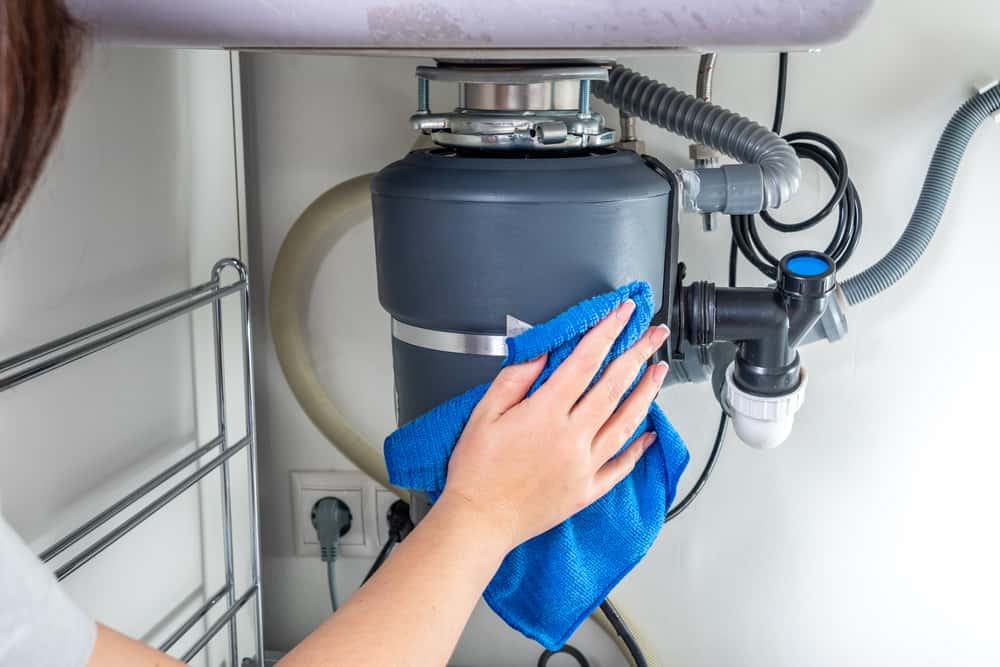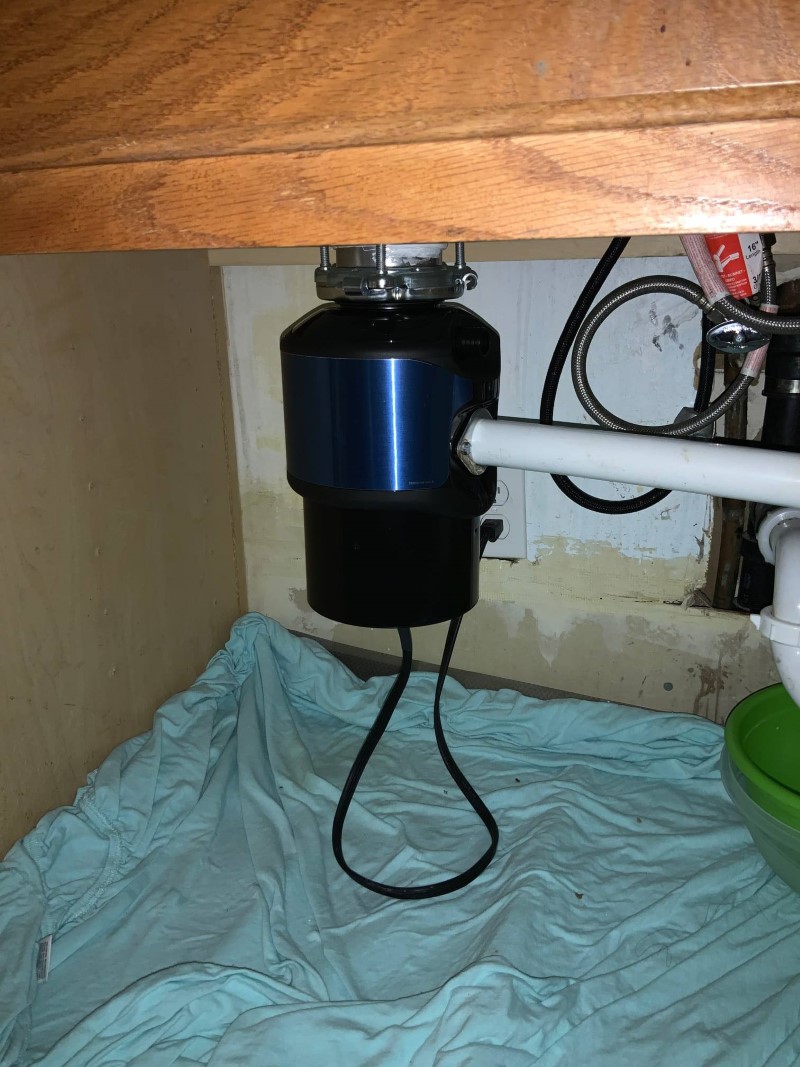Fast Fixes for a Dripping Garbage Disposal
Fast Fixes for a Dripping Garbage Disposal
Blog Article
The publisher is making several good points regarding Why Is My Garbage Disposal Leaking From the Bottom? as a whole in the content below.

Waste disposal unit are important cooking area appliances that aid in getting rid of food waste effectively. Nonetheless, a leaking waste disposal unit can be a frustrating and untidy trouble to handle. The good news is, numerous leakages can be fixed conveniently with a few basic actions. In this write-up, we will certainly review just how to fix a leaking garbage disposal efficiently.
Introduction
Garbage disposals are set up under cooking area sinks and are created to shred food waste into smaller sized items, permitting it to travel through the pipes system conveniently. While these devices are normally reputable, leakages can occur with time due to wear and tear, loose connections, or damage to the device.
Common Root Causes Of Leaks in Waste Disposals
Worn Seals and Gaskets
Seals and gaskets play an essential function in stopping water from dripping out of the waste disposal unit. Gradually, these elements can deteriorate, leading to leakages around the disposal unit.
Loose Links
The connections in between the waste disposal unit and the plumbing system can come to be loose with time, causing water to leakage out during operation.
Fractures or Openings in the Disposal Device
Physical damage to the garbage disposal, such as fractures or holes in the real estate, can additionally result in leaks.
Identifying the Source of the Leakage
Before attempting to deal with a leaking waste disposal unit, it is important to determine the resource of the leak. This can generally be done through aesthetic inspection or by conducting basic examinations.
Visual Examination
Check the garbage disposal device very carefully for any type of indicators of water leakage. Pay close attention to locations around seals, gaskets, and connection factors.
Checking for Leaks
One method to check for leakages is by running water through the disposal unit and looking for any noticeable indicators of leak.
Devices and Products Needed for Dealing With a Leaking Waste Disposal Unit
Before starting the repair work procedure, collect the necessary tools and products, consisting of a screwdriver, flexible wrench, plumbing's putty, replacement seals or gaskets, and epoxy or patching material for fixing fractures or openings.
Step-by-Step Overview to Dealing With a Dripping Garbage Disposal
Turn Off the Power
Prior to attempting any kind of repair services, guarantee that the power to the waste disposal unit unit is switched off to prevent the threat of electric shock.
Locate the Leakage
Identify the precise area of the leak and figure out the reason.
Tighten Links
Use a wrench to tighten up any loose connections between the disposal unit and the pipes system.
Replace Seals or Gaskets
If the leakage results from worn seals or gaskets, remove the old parts and replace them with brand-new ones.
Patching Cracks or Holes
For fractures or openings in the disposal device, usage epoxy or an appropriate patching product to seal the broken location.
Examining the Garbage Disposal After Fixing
When the repair service is full, examine the garbage disposal by running water with it to make sure that the leakage has actually been resolved.
Preventive Maintenance Tips to Prevent Future Leaks
To prevent future leaks, it is vital to do routine maintenance on your garbage disposal. This includes keeping it clean, staying clear of putting non-food items or difficult things down the disposal, and periodically looking for leakages or other problems.
Verdict
In conclusion, fixing a leaking waste disposal unit is a reasonably straightforward process that can be completed with fundamental devices and products. By adhering to the actions detailed in this write-up and exercising preventative upkeep, you can maintain your waste disposal unit in good working problem and stay clear of pricey fixings in the future.
HERE’S HOW TO FIX YOUR GARBAGE DISPOSAL
WHAT TO DO IF SOMETHING IS STUCK IN YOUR GARBAGE DISPOSAL
If the impeller won’t turn, there’s probably something stuck in the disposal. It could be a steak bone or peach pit, although plumbers report pulling all sorts of inappropriate objects out of disposals, such as bottle caps or aluminum foil. Make sure power to the disposal is off, and look inside to see if you can see the source of the jam.
Never stick your fingers in a disposal. Pull out anything you see with tongs or pliers.
If the disposal still won’t work, it may be time to call a plumber or consider buying a new disposal. GEM Plumbing & Heating is here for all of your garbage disposal needs.
WHAT TO DO IF YOUR GARBAGE DISPOSAL DRAIN IS CLOGGED
Take everything out from underneath your sink and put a bucket or other container under your disposal to catch any water that drains out. Disconnect your disposal from the power supply. If it’s plugged into a wall outlet, unplug it. If it’s hardwired into an electrical box, go to the electrical panel and turn off the breaker for the disposal. Pour ¼ cup of baking soda into the drain, followed by ½ cup of white vinegar. Give the solution a few minutes to fizz and do its work. Look into the disposal with a flashlight to see if you can see an object that might be causing the clog. If you see it, remove it using tongs or pliers. MORE TIPS ON DEALING WITH A CLOGGED GARBAGE DISPOSAL
Never use drain cleaner in a garbage disposal. It can damage the plastic parts inside the disposal. You can also be splashed with the caustic liquid while working to clear the clog. Beware! Never stick your fingers into a garbage disposal. Trust us — not a good idea. In many instances, your dishwasher drains through your garbage disposal. This allows the disposal to grind any large food particles that may be drained out of your dishwasher. There are some jurisdictions, however, where the plumbing code prohibits such a connection. WHAT TO DO WHEN YOUR DISHWASHER DRAINS THROUGH THE DISPOSAL
Run some water in the sink so your plunger has at least a ½-inch of water to create a seal and plunge vigorously up and down several times. You may need to repeat this several times. Run hot water down the drain to clear any residue that remains.

We hope you enjoyed reading our article on Why Is . Thanks so much for taking the time to read through our article post. Sharing is caring. One never knows, you will be helping someone out. Thanks so much for taking the time to read it.
Go Services Report this page